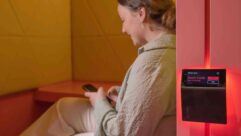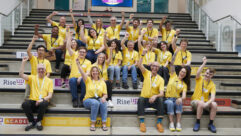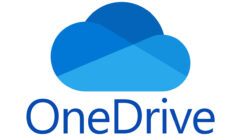
The human toll of the pandemic has been devastating on so many levels, and continues to demand fortitude in the face of loss, and enterprise in all areas of human life. The AV industry was poised to be of vital service to education, worship, and to facilitate the mandated work from home period with products and services to help ensure business continuity. During the last three quarters of 2020, our industry has seen unprecedented rapid innovation and delivery of new products and services to usher in a new era of workplace.
Like the pandemic, the “return-to-office” has been anything but predictable. In March, many thought the return would be completed by the summer. Summer turned into fall, and as we near the end of the year many companies have released statements that workers will not fully return to the office until summer 2021. Even amid promising news of a vaccine, CEOs report that the hybrid workplace is here to stay. The workplace has changed forever.
Fifty percent of respondents to Crestron’s Corporate Customer Survey, conducted in July 2020, said they intended to add more video conferencing in the next two years, doubling their plan from early March. Citing a more urgent need, 20 percent of customers reported they were adding more video conferencing to their meeting spaces immediately.
Zoomed-Out
Last year the general public had never heard of the video conferencing platform, Zoom. In March 2020, with millions of school kids sent home to resume classes on the family computer, college students sequestering back home, and workers searching for an easy to use platform, “zoom” entered the vernacular spoken by the masses.
Whether using Zoom, Microsoft Teams, Cisco Webex, Google Meet, or a myriad of other platforms, the consensus is that workers are “zoomed-out.”
To facilitate the hybrid workplace, video conferencing has become and will remain a critical cog. Of course, video conferencing is not new to the AV industry and fortunately manufacturers have been providing true collaboration tools and other meeting room solutions for several years.
Armed with more user data than even vaccine researchers could hope for, manufacturers have the opportunity to emphasize the benefits of existing and new solutions, and consultants, integrators and technology managers are helping clients build-out new meeting spaces that truly support collaboration and productivity.
In preparation for a recent webcast, The Hybrid Workplace 2021, the panelists and I had an engaging discussion about topics we were going to discuss. Below are some outtakes from panelists, Michael Bergeron, Senior Product Manager, Live Production at Panasonic USA, Nancy Knowlton, President & CEO at Nureva, Christopher Jaynes, Founder and CTO at Mersive, Tim Mackie, Field Systems Engineer at Yamaha Unified Communications, John Mitton, CTO/VP of Audiovisual Technology at Red Thread as they brainstormed critical elements as companies return to work and beyond.
Technology Lessons
“We’ve all participated in enough bad calls and had enough bad experiences that we’re just not willing to put up with what we did before,” said Nureva’s Knowlton. “There’s going to be a higher demand for higher experience.”
Hands-down everyone agreed that the number of “zoom” meetings we are having has become taxing. “Those first two months of remote meetings, I found that I was just exhausted,” Knowlton said. “If I was in a meeting I wouldn’t be scanning all of the participants faces if we were together in a room. But I found when I was in a connected meeting I was looking at everyone, and honestly, that’s exhausting. So, I turn off my video and focus on the content and what people are saying. I turn on the camera when I need to look at the screen for the content. I’ve learned how to adapt and be less tired from this mode of interacting.”
Yamaha UC’s Mackie added, “In a meeting you’d normally be looking at some focus in the room where you’re not looking that the five or six faces in the room. Imagine a video call where we’re not looking at each other and we’re looking at the central object, and only when I speak does my camera come on.” How do we evolve the video to be less stressful? Across the board, the top complaint is the lack of good quality audio.
As workers are moving between the corporate office and home office, a commonality of devices becomes important. “We’ve all got our favorite mobile audio piece,” Mackie said, holding up his Yamaha YVC-200 Bluetooth speakerphone. “This thing can go back into the office with me with its echo cancellation, its human voice detection, its noise suppression and do a three or four person meeting huddled around a table. It’s got a 10-hour battery, so I can take it to a hotel go poolside and listen to music. It’s intelligent enough to know I’m listening to music and change the EQ, or when I plug into a conference it knows its speech and optimizes for the audio. Those are the technologies that we’re going to be seeing in this space as we move forward.”
Mersive’s Jaynes said that he agrees that audio is number one, but in a recent meeting with a large video conferencing company, he said that it was discussed that, “audio is number one, but number two is actually content, and number three is video in the modern world. If I can’t see the spreadsheet or PowerPoint we’re supposed to talk about, that’s a far worse experience than if I can’t see your face, especially once we’ve built rapport. I don’t need to see my teams’ faces every morning; I need to see what we’re working on together.”
Tools exist to deliver a higher production value to meetings and Panasonic’s Bergeron suggests we’ve all done it before as we learn how to make PPT presentations more engaging. “If we’re going to have meetings like this then it’s appropriate to talk about getting real production value to keep people engaged and not ask so much of them. These tools exist we just have to get the price down so people afford to use them.
“We’re learning best practices and etiquette,” Bergeron said, and he reminded us of what has become a favorite industry quote, “TV without video is radio, TV without audio is surveillance.”
At Panasonic they’re putting their own products to work. “We’ve developed online demos using our gear; we can control switcher output and robo cameras. And they keep getting better to the point where coming in with four cases of gear and setting it up for two hours, then doing a demo, going to lunch, then coming back and breaking it down for the rest of the day and then going to the airport—that’s over.”
Learning From 2020
The panel agreed that the initial productivity gains people were experiencing when they went remote are disappearing. “People are spending more time on video meetings than they would in meetings in the office,” Red Thread’s, Mitton said. A balance needs to be reached. “How do you create the experience that allows people to engage on video and be able to support the ability to be innovative and creative?”
With the remote or hybrid workplace, we are missing chance encounters. “How can you create that in-between space during a video call? When people go to meetings early, they have personal interactions, but now that’s missing because now you go from call to call,” Mitton said. There’s the after meeting. “You would have conversations and people feel some real work might get done in the last four or five minutes after the meeting where things are summarized in an informal way.”
Jaynes agreed, “When you talk about the taxonomy of different meeting types like transitional meetings and micro meetings that happen before and after meetings—this matters.” Recognizing the level of productivity from different types of meetings is also important. “What we’ve learned about the hybrid workplace as it starts to emerge is that there’s this clarity about what types of work we can be productive at when we’re sitting at home alone, and which types we’ve finally learned that there’s no way I’m going to be productive.”
As some companies are struggling with the right balance of in-office, Jaynes said, “We can’t lose sight of the fact that the hybrid workplace will be about personal choice.” Jaynes suggested the need for technology to support a more organic ecosystem. “In a world where it’s ad hoc and it’s more about personal choice and not necessarily a booked meeting that sits on the calendar and everybody has to be in a certain conference room. How do I find a space that’s healthy and open, and if my colleagues are on campus by accident that day how do they know I found that space and they can drop in because there are two or three slots open?”
Democratization
It wasn’t too long ago that remote workers, especially those working from home were treated as outsiders. “There needs to be a democratization of the whole experience that’s something we need to look at,” Mitton said. “Before, if you were remote, you were disparaged, because you were the odd-person remote, but know the person in the office might be the odd person.”
It’s important that companies maintain their unique culture. “We’re a strong believer that space drives behavior, and behavior drives culture. If you don’t have everyone together in one space, what’s keeping people together. Why can’t I go work for anyone? Those are key parts of what we’re looking at in the new world,” Mitton said.
Jaynes is confident that we’ll reach a balance. “Now we have to figure out how we are completely equal. Whether or not I’m in the room with you collaborating around content or a model in a room, how does someone remote feel they are engaged and they’re contributing. Just because they chose to stay home for the day, can’t mean that they’re second class.
You’re going to have people that are fluidly moving on and off sight depending on their personal choice for that day or week depending if they had visitors or their grandparents are in town. I think it’s a positive thing—don’t we all want that?










